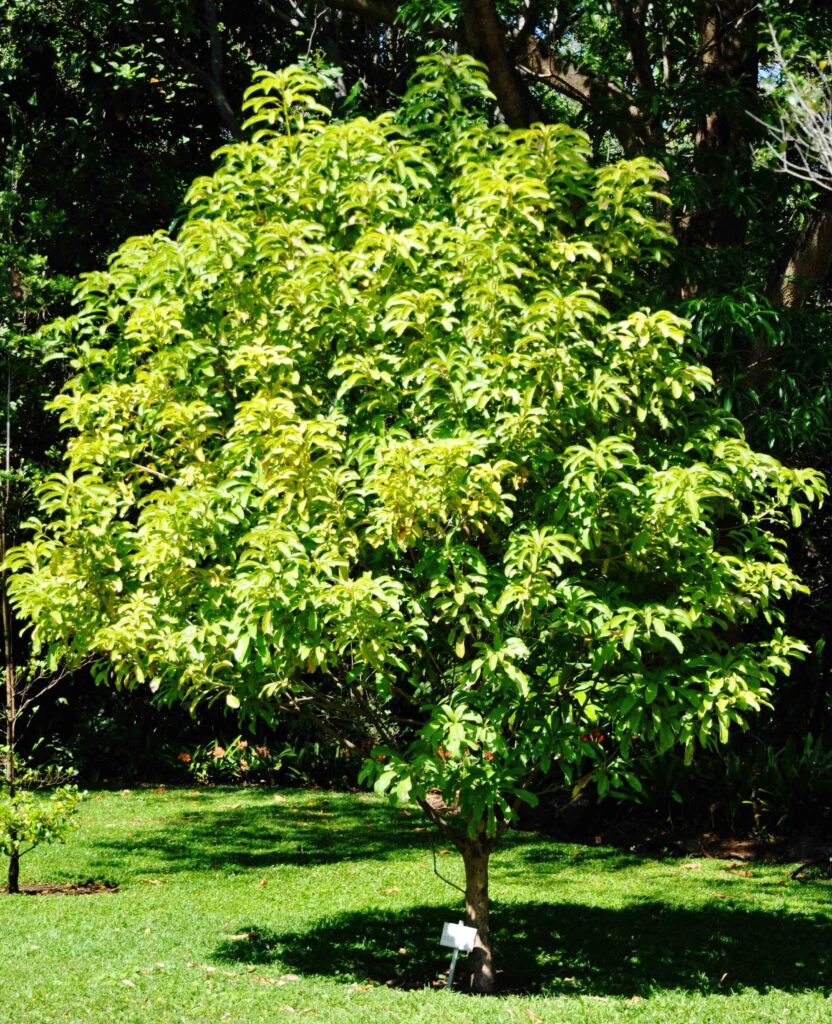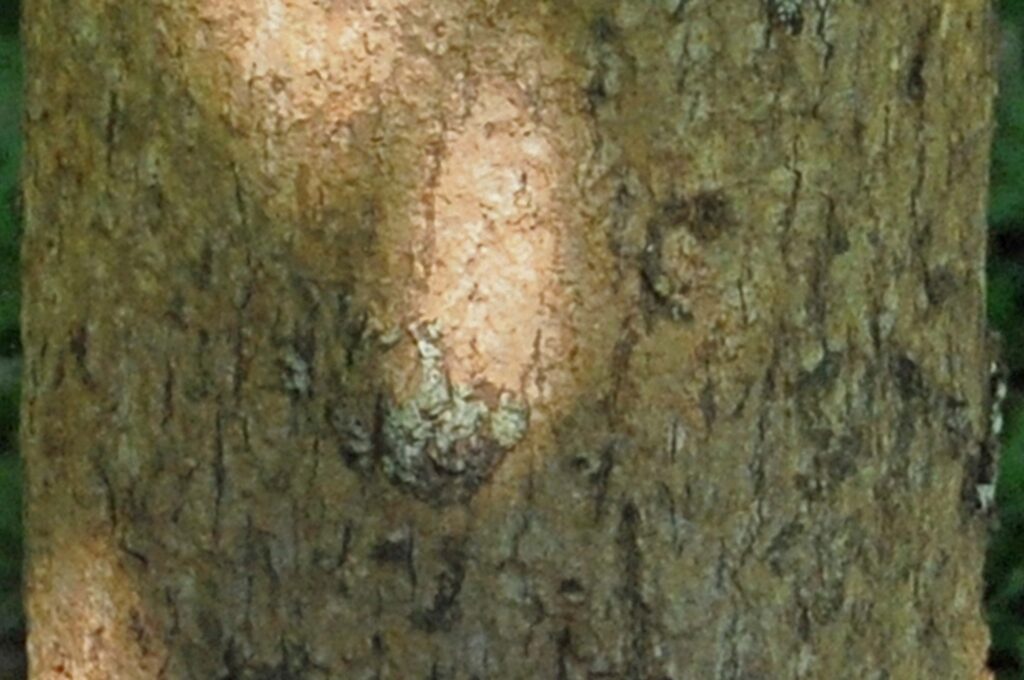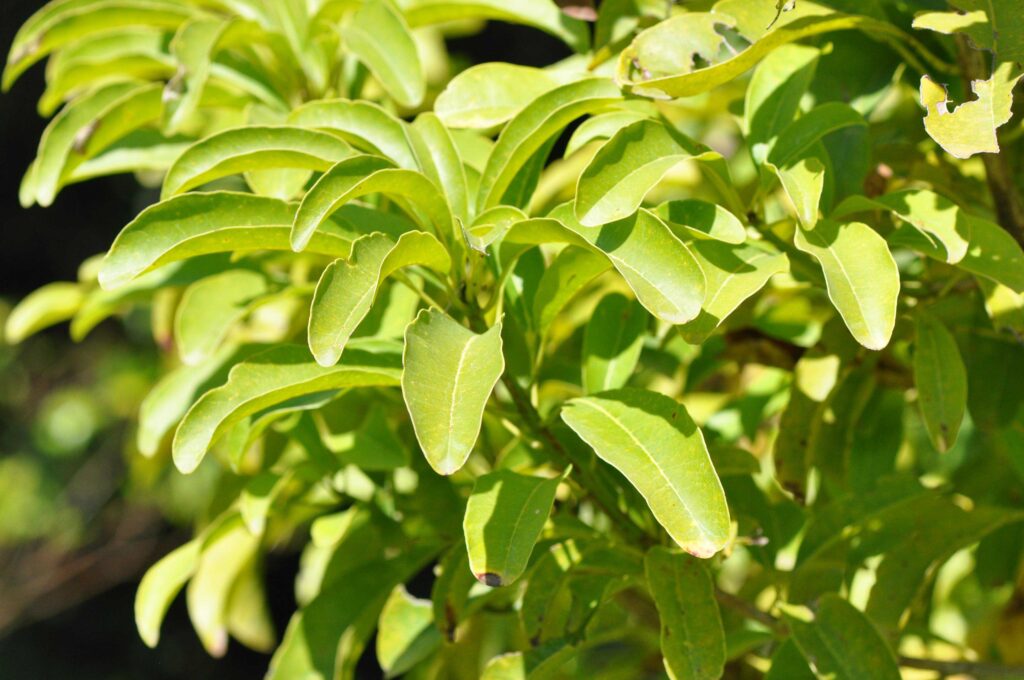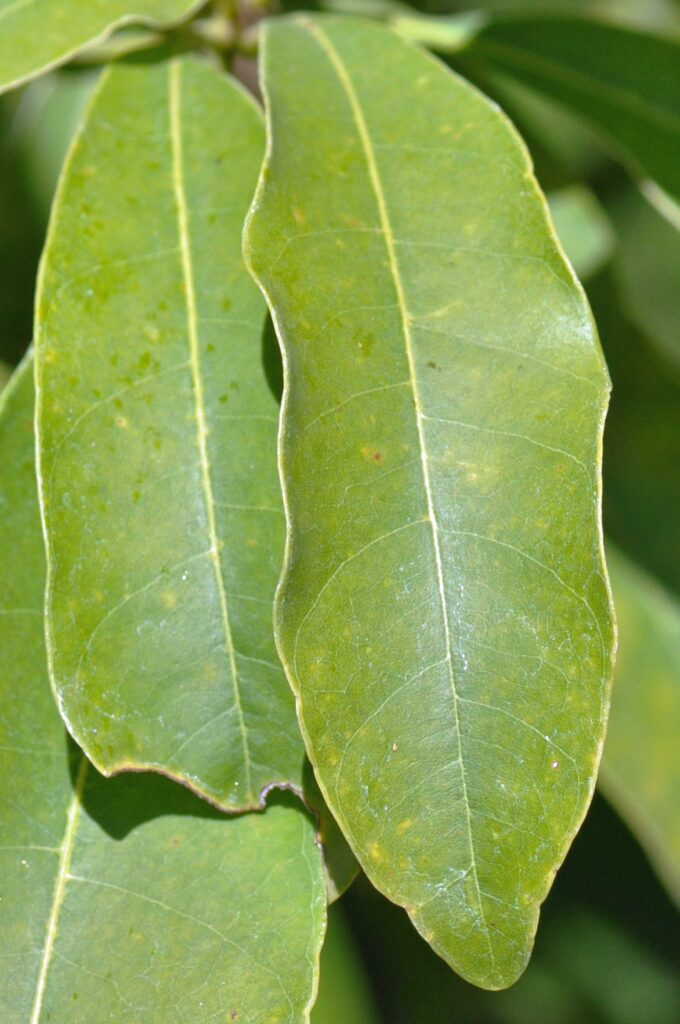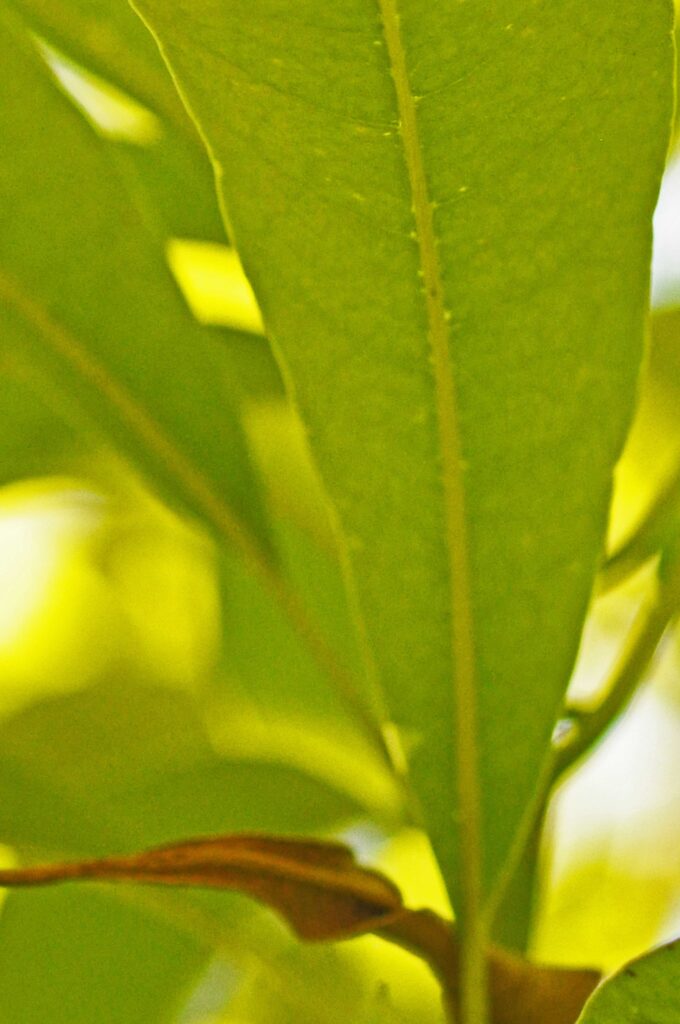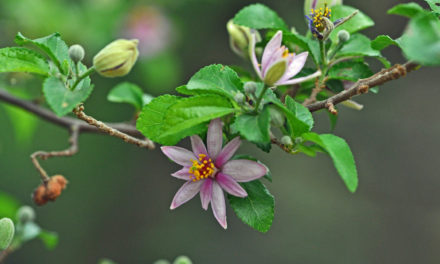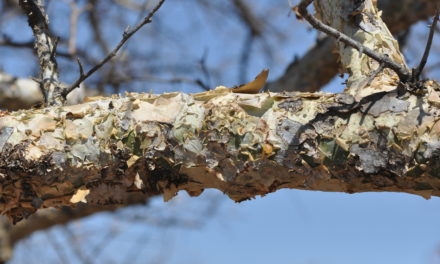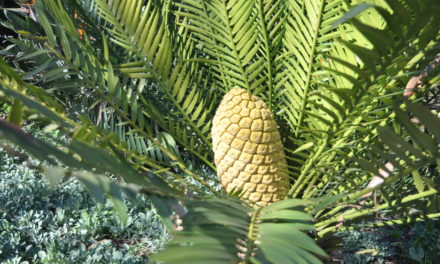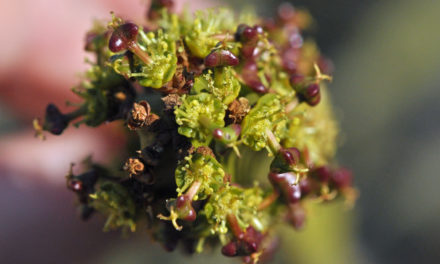General Info – summary
The straight, unfluted, spineless Tree has milky sap & is up to 30m high. Simple glabrous shiny & variable shaped Leaves are entire, and stipules are caducous. Bisexual regular Flowers with 5 whitish petals, develop in leaf axils or on bare branches. 5 stamens alternate with outer staminodes. A superior 5-locular ovary extends with short tapering style. Fruit: a red berry + a persistent calyx, producing a single scarred seed.
Description
Inhambanella henriquesii
Precious Names: Lecomtedoxa henriquessi, Mimusops henriquessi.
SA Tree No. 591.
Common names: (Afr) Melkpeer. (Eng) Milk Pear, Milk-pear, Milkpear. (isiZulu) Umbenkela, Umthungulu.
Family: Sapotaceae. (Stamvrug, latex-yielding family). This family is pantropical (distributed throughout the tropics) and includes 35-75 genera and approximately 800 species. Local genera with trees on this website include Englerophytum, Inhambanella, Mimusops, Sideroxylon and Vitellariopsis. Branches exude latex. Leaves are simple, entire and there are closely parallel secondary veins. Stipules are absent. Flowers are bisexual, usually actinomorphic (regular). There are persistent Sepals and fused Petals. The Stamens equal the number petals. Staminodes may be present outside the fertile stamens. The superior Ovary has locules containing a single ovule. One Style and 1 Stigma are present. Fruit is a berry. Seeds have a thick brown shiny testa (seed coat) with a distinct pale scar. Seeds dispersed by birds, bats and mammals. There are 7 genera and 14 species in southern Africa.
Name derivation: Inhambanella from Inhambane in Mozambique (about 470km northeast of Maputo). henriquesii – named after the Julio Augusto Henriques who was a supporter of Darwinism, a botanist, and geologist and was an extensive plant collector in Portugal. Inhambanella henriquesii is the only species of this genus in the southern Africa. One other exists in West Africa.
Conservation: National Status: L C. (Least Concern). 2005 W. Foden & L. Potter.
Tree
With its straight unfluted Trunk, this tree may reach 30m+ high. Abundant milky latex occurs in all parts. The Bark (photo 793) is finely scaly, light brown to grey-brown and becomes mottled, rough and flaking. Milky sap is present in all parts. The Branches extend to form a spreading densely leafed Crown and have visible leaf scars. There are no thorns or spines present, and twigs are hairless.
- 794. 2014/09/15. Lowveld NBG. Photo: David Becking.
- 793. 2014/09/15. Lowveld NBG. Photo: David Becking.
Leaves
Early in the year the new young Leaves are a distinctively and impressive coppery-red. All leaves become crowded at the branch ends and are simple (have a single blade that may have incisions that are not deep enough to divide the leaf into leaflets). Leaves are glabrous (hairless), green to grey-green and up to 14 x 5cm. The spirally arranged leaves spread out and, as they age, the shape may vary. They may be elliptic, often obovate (the reverse of ovate, the terminal half is broader than the basal – photo 795) lanceolate or oblanceolate (the reverse of lanceolate, the leaf is broader at the apical third than at the middle and tapers towards the base). The Blade has 6-11 pairs of slender widely spaced Lateral veins that are initially parallel and visible on both sides. A fine network of fine veins is present, and the side veins eventually loop together towards the apex. The shiny leaves are coriaceous (leathery). The Apex may point backwards (photo 796), is round, bluntly pointed or notched, and may taper to a protracted point (photo 795). The Base is narrowed. Wavy Margins (photo 795) are slightly rolled under, thickened and are entire (with a continuous margin, not in any way indented). The slightly thick Midrib is conspicuous on both sides, indented above and raised below. Each Petiole (leaf stalk) is up to 5cm long and has a swollen base. Leaf bases tend to fold around the petiole (photo 797). Stipules (basal appendages of the petiole) are caducous (an organ or part that is easily detached and shed early).
- 797. 2014/09/15. Lowveld NBG. Photo: David Becking.
- 795. 2014/09/15. Lowveld NBG. Photo: David Becking.
- 796. 2014/09/15. Lowveld NBG. Photo: David Becking.
Flowers
The honey scented, bisexual Flowers are inconspicuous and actinomorphic (Regular, symmetrical. Flowers are vertically divisible into similar halves by more than 1 plane passing through the axis). The 1,5cm wide flowers develop from hairy buds that each occur on a stout, hairy Pedicels (stalk of a single flower). Flowers are situated on leaf axils or may appear next to leaf scars on bare branches. The Calyx has 5 or 6 free lobed Sepals that are externally hairy. They are imbricate (having regularly arranged, overlapping edges, as roof tiles). The Corolla usually 5 white to yellow Petals, joined to form a basal tube that is longer than the Calyx. The petals are deeply 3-lobed. The 5 Stamens are epipetalous (attached to the petals) and alternate with petaloid (resembling petals) lanceolate, ovate-lanceolate to narrowly triangular Staminodes (sterile stamens). The staminodes occur outside the fertile stamens. The Anthers are apiculate (ending in a short, sharp, flexible point). There is a single Pistil (a unit of the Gynoecium, the female element of the flower, composed of the Ovary, Style and Stigma). The superior pubescent Ovary usually has 5 locules (compartment within an organ). There is a single, glabrous (hairless), short Style which tapers to the apex. (Aug-Nov).
Fruit
The oval, ovate, almost spherical or ellipsoidal Fruit is a fleshy Berry (pulpy, indehiscent fruit like a grape or tomato). It is firm to touch and up to 4cm wide. Both the persistent thickened Calyx clasping the base and a short point are visible. The mature, glabrous fruit is a brilliant orange-red. A leathery skin covers a layer of sweet, milky flesh. Within this is a large, single, dark, shiny Seed up to 3cm long and containing a large lateral scar on the ventral surface. The Testa (seed coat) is crustaceous (having a hard crust or shell). (Oct-Jan).
Distribution & Ecology
These trees are found in low altitude evergreen coastal forests and swamp margins on the eastern side of Africa. The trees occur naturally in Maputaland (northern KwaZulu-Natal), Swaziland, Mozambique, Kenya, Malawi, and from Zimbabwe to Tanzania. Wood is reddish and used for making carrying sticks. Animals – including birds, consume the tasty Fruit. A different species occurs in West Africa.
Ethnobotany
The Fruit is edible, tasty and has a very high vitamin C content. The Wood is not milky but is a deep reddish brown with fine, tight grain lines that vary from dark brown to reddish or a straw colour. Plants are easily grown from seeds.
References
Boon, R. 2010. Pooley’s Trees of eastern South Africa. Flora and Fauna Publications Trust, Durban.
Burrows, J.E., Burrows, S.M., Lotter, M.C. & Schmidt, E. 2018. Trees and Shrubs Mozambique. Publishing Print Matters (Pty) Ltd. Noordhoek, Cape Town.
Coates Palgrave, M. 2002. Keith Coates Palgrave Trees of Southern Africa, edn 3. Struik, Cape Town.
Foden, W. & Potter, L. 2005. Inhambanella henriquesii (Engl. & Warb.) Dubard. National Assessment: Red List of South African Plants version 2020.1. Accessed on 2022/03/01.
Lawrence, G. H. M, 1951. Taxonomy of Vascular Plants. The Macmillan Company, New York. Tenth Printing 1965.
Palmer, E. & Pitman, N. 1972. Trees of southern Africa, Balkema, Amsterdam, Cape Town.
http://www.zimbabweflora.co.zw/speciesdata/species.php?species_id=143840http://celp.org.uk/webpages/projects/ecology/tree%20guide/pages/SAPOTACEAE/Inhambanella%20henriquezii%20.htm
https://www.stilesandbates.co.uk/product.php/section/7353/sn/MIPESB_MST
https://www.google.co.za/search?q=Inhambanella+henriquesii+pic&rlz=1C1SAVI_enZA520ZA521&espv=2&biw=1066&bih=538&tbm=isch&tbo=u&source=univ&sa=X&ei=0So-VJjnIMTZ7gbv7YD4CQ&ved=0CBsQsAQ#imgrc=SzqpoaX9oMDmpM%3A
http://posa.sanbi.org/flora/browse.php?src=SP

